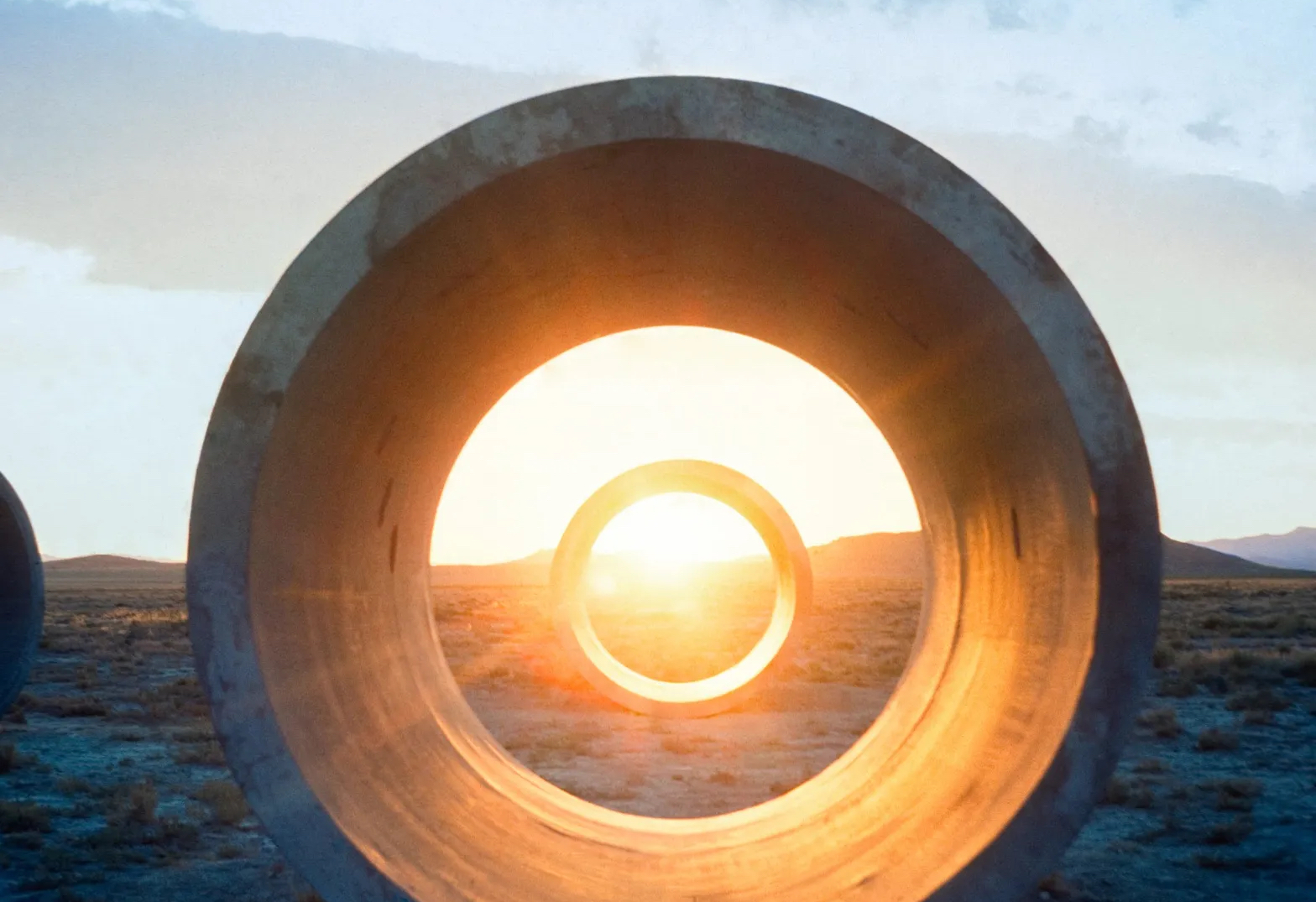BERLIN — “Sun Tunnels” (1973–76), a monumental sculptural installation in the Utah desert, so overwhelmingly dominates discussion of Nancy Holt’s oeuvre that it took my walking through an entire survey to unlearn what I thought I understood. Nearly a third of Nancy Holt: Circles of Light at Gropius Bau is dedicated to preparatory drawings, scientific calculations, and time-based photographs for “Sun Tunnels.” Only after coming out the other end did I understand that the essence of the work — and Holt’s practice as a whole — lies in the interaction between human bodies and celestial systems like the stars, rather than the earthen materials and monumentality emphasized by many other Land Art practitioners.
Co-curated by Gropius Bau’s Clara Meister and Holt/Smithson Foundation director Lisa Le Feuvre, this roughly chronological survey frames Holt as an artist committed to the human body’s actions and dimensions, and its perceptual and cognitive boundaries, through a body of work spanning concrete poetry, photography, installation, performance, and land art, plus rarely exhibited experimental films. In her “Electrical System” (1982), light bulbs connected by a metal framework draw viewers’ attention to the existence of an invisible electrical grid; similarly, Holt saw the human body itself as an intricate system contained within larger ones. From this keen awareness of the delicate equilibrium between the body and its environs, it was logical for her to dive into what we call environmental or ecological art today.

The body’s scale is immediately felt in the series Locators (c. 1971–80), whose seeming simplicity belies its optical and conceptual wit. Visitors to “Locators with Loci” (1972), consisting of four metal stands, each with a circular, telescope-like hole to look through, will likely note the work’s preset bodily scale, which makes some stoop and others stand on tiptoes to use the “seeing device,” as Holt called it. Through the round opening, the four black ellipses painted on the wall appear as circles.
Her four-monitor video sculpture “Points of View” (1974) expanded her experiments with locational uncertainty. She recorded four partial views of Lower Manhattan and overlayed them with audio recordings of friends, including Richard Serra, trying to make sense of those same views. Watching the videos adds yet another dimension to the work: that of sensing oneself as outside the circle of Holt’s interlocutors, even more spatially and psychologically removed from the city’s actual topography.
Perceptual uncertainty plays into Holt’s video works centered on sound distortions, two of which, “Boomerang” and “Match Match Their Courage” (both 1974), both made in collaboration with Serra, are on view. In the former, Serra plays a recording of Holt’s voice back to her, which she listens to on headphones while continuing to speak; in the latter, she and artist Charlemagne Palestine try to converse while their voices echo. In either instance, the aural and cognitive cacophony of the feedback loop conveys not only temporal but also bodily displacement.

Holt also explores embodiment in her site-specific actions, connecting her to artists such as Ana Mendieta, who staged evocative performances using her body, often in nature. Seeing the images of artist Joan Jonas — who, according to the wall text, Holt called “my Woman in the Dunes” — climbing up and down dunes as documented in Holt’s multi-photograph works, “Over the Hill” and “Down Hill” (both 1968), I couldn’t help but think that in addition to seriality and spatial-temporal dislocation, Holt was also fascinated by temporally bound bodily movement. Jonas’s body marking its trajectory on the vast dunes, for instance, rhymes poetically with the planetary movements in “Sun Tunnels.”
For “Sun Tunnels,” Holt studied physics and worked with engineers to design culverts in which visitors could observe the sun falling and rising during the summer and winter solstices — but also to protect their bodies from extreme heat and cold. There’s great poetry in the image of a human body sheltering inside a circle, as the sun makes its circular journey, tracing shadows on concrete. The poetic dimension of this work shouldn’t be surprising. Holt borrowed her motto from the poet Emily Dickinson: “My business is circumference” — a line that’s all about geometry in motion.

Nancy Holt: Circles of Light continues at Gropius Bau (Niederkirchnerstraße 7, Berlin, Germany) through July 21. The exhibition was organized by Clara Meister and Lisa Le Feuvre.

